Meritxell Sanctuary
Andorra
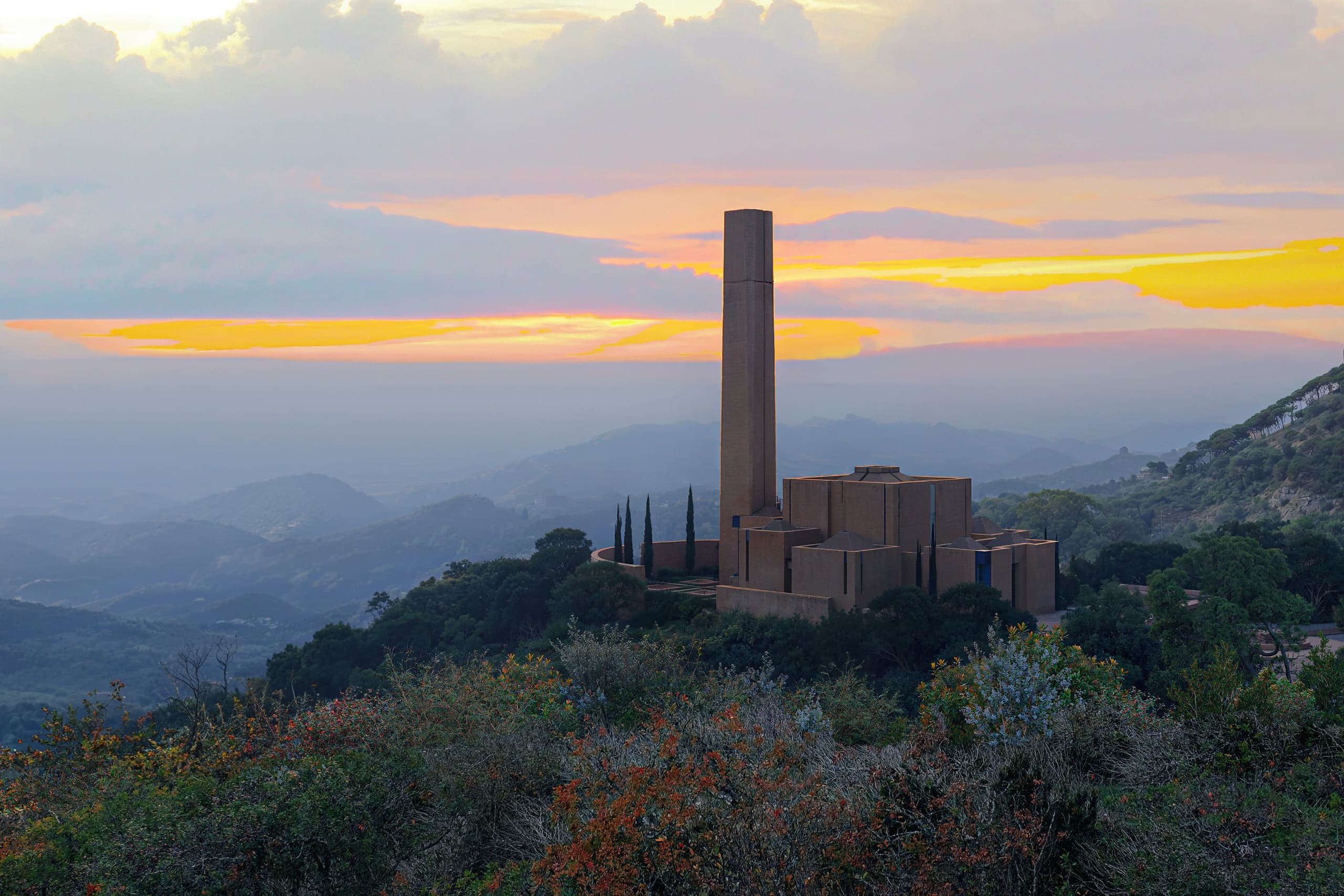
LOCATION
Tirana
CLIENT
Government of Albania
YEAR
2023
STATUS
On going
BUA
18.600 SQM
CEO
Pablo Bofill
Design Principal
Hernan Cortes
Landscape Design
Vivian Rotie
Management
Enrique Mascort
TEAM MEMBERS
Andrea Canepa, María Esteban, Bárbara Fonseca, Patricia Llasera, Carmen Ortíz-Cañavate, Ilaena Napier, Alba Peláez, Silvia Toraño, Clara Yammine
SEE CREDITS
OVERVIEW
LOCATION
Tirana
CLIENT
Government of Albania
YEAR
2023
STATUS
On going
BUA
18.600 SQM
Saint Teresa often described herself as a blend of contradictions: “By blood, I am Albanian. By citizenship, an Indian. By faith, I am a Catholic nun. As to my calling, I belong to the world. As to my heart, I belong entirely to the Heart of Jesus.” Her Albanian roots are acknowledged and celebrated in her homeland, where tributes can be found in Tirana’s largest civic hospital, the main airport, a public square, and national celebrations on September 5th. Saint Teresa Sanctuary is conceived as both church and monument, testament to Saint Teresa’s faith and a space for collective introspection.
Religious architecture has long been positioned on elevated sites – hills, mountains – as a means of drawing nearer to the divine. Saint Teresa Sanctuary follows this tradition, rising on Lapidari Hill to the south of Tirana. Visitors ascend a winding road, once home to a modest farm, toward the summit. Here, two paths diverge: one offering panoramic views of the city, the other facing the setting sun. These paths converge at the sanctuary’s core architectural elements – church, monument, and pavilion – arranged on the flattest parts of the hill.
Smaller footpaths wind through the surrounding landscape. Its design is composed of five biblical gardens, each dedicated to a plant or tree significant in scripture. Some species are directly named in the Bible; others are chosen for the emotions they evoke. One garden, for instance, features budding flowers to symbolise new beginnings. In each garden, these symbols are given architectural form– a sculpture, fountain, monument, coenaculum, or walled garden.
The Sanctuary’s colour palette draws directly from the life of Saint Teresa, incorporating the Marian blue stripes of her sari – signifying faith and devotion – as well as the white of purity and peace. Marian blue bricks frame key volumes, providing a striking contrast to the pale facades. Inside, light filters through the windows in bands, referencing the Trinity and the simplicity Saint Teresa embraced.
Shaped like a cross, the plan of the church reflects the central tenet of Christianity: Christ’s death and resurrection. Visitors enter at the base of the cross, moving down the nave past the confessional and sacristy, to arrive at the altar and the tower. The tower, with its yellow stained-glass windows, glows with a warm light, offering sweeping views of the landscape beyond. Outside, wide steps extend the sanctuary’s reach, providing space for gathering or quiet contemplation.
IMAGES BY
MIR
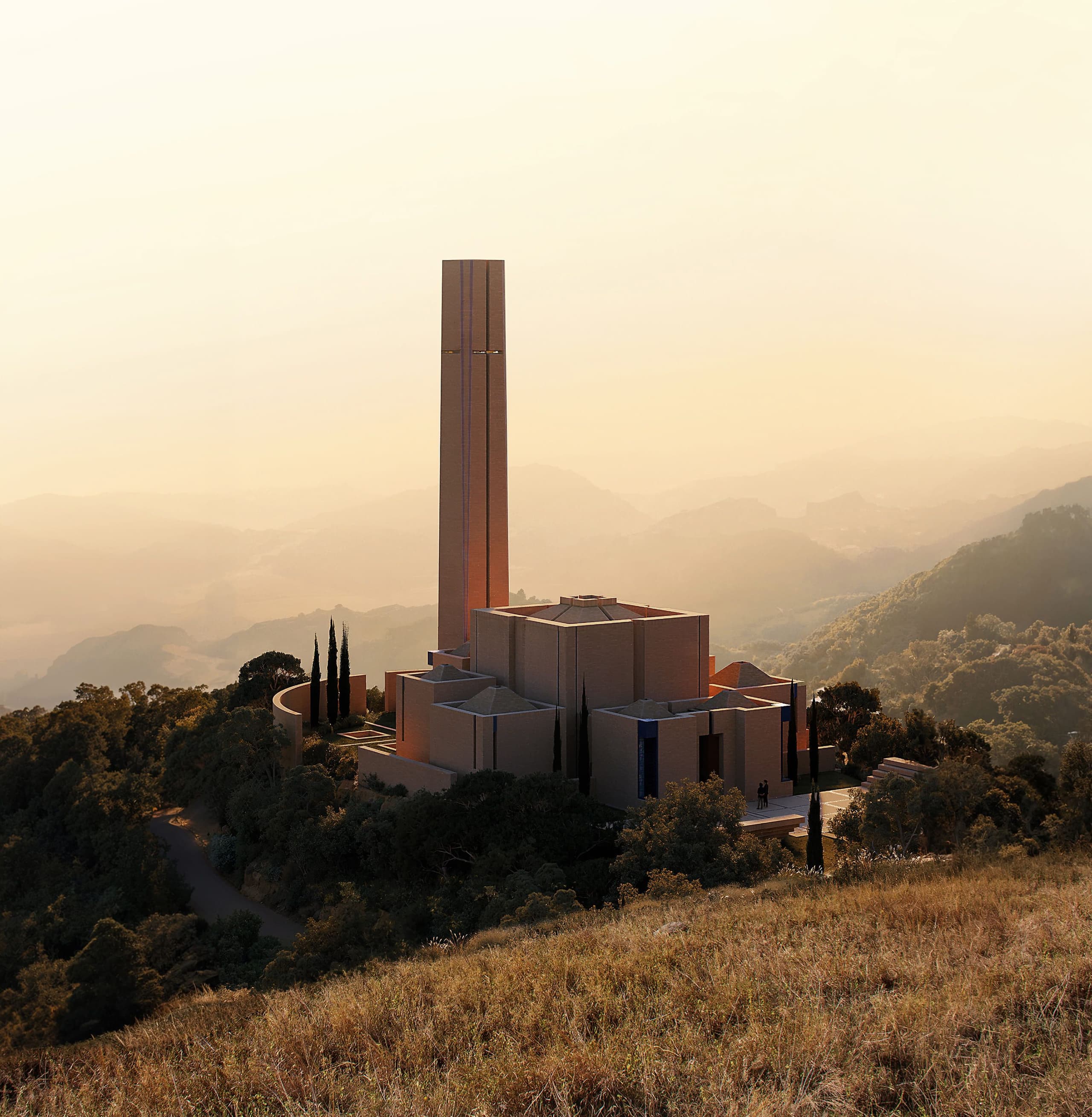
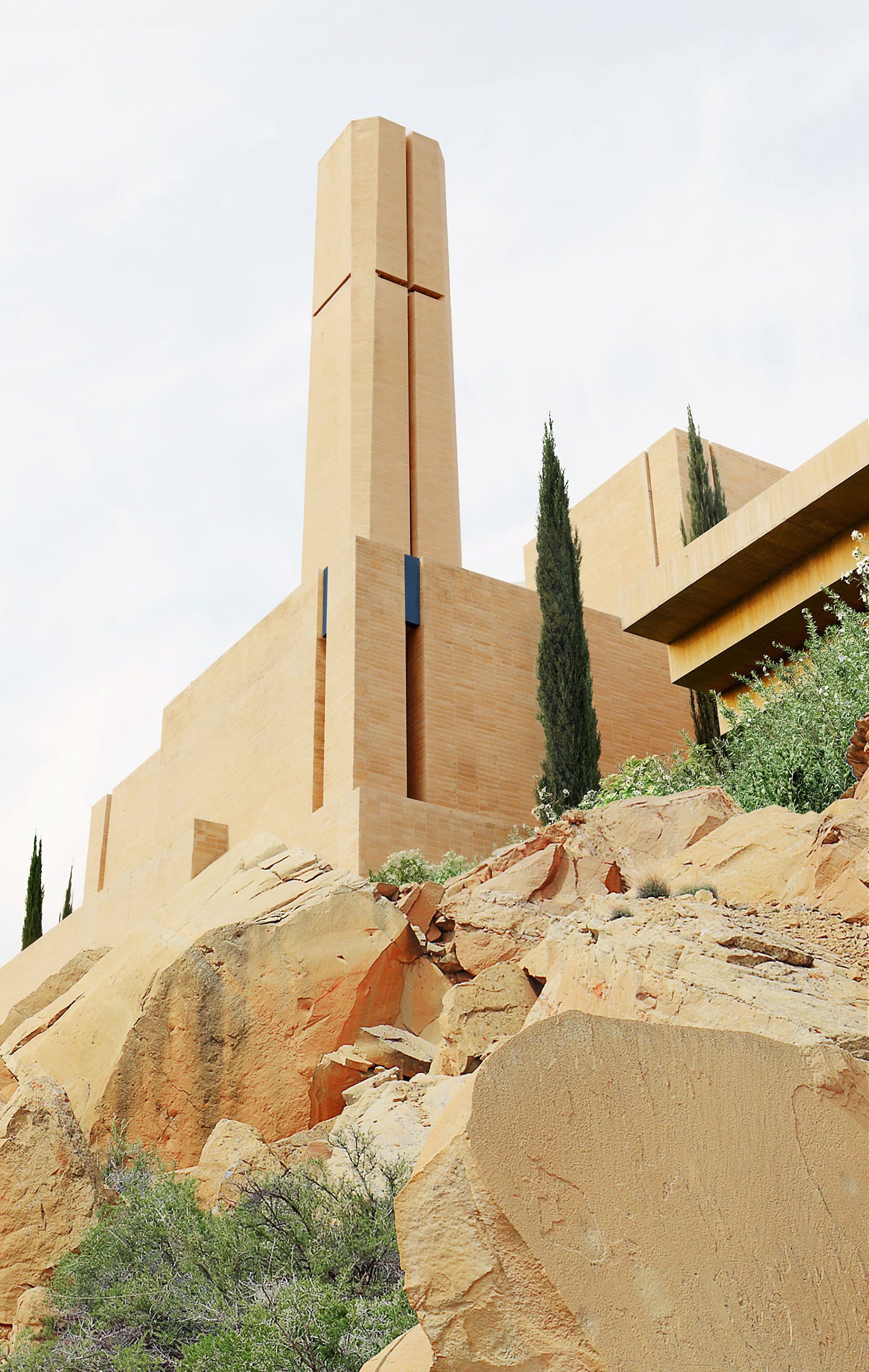
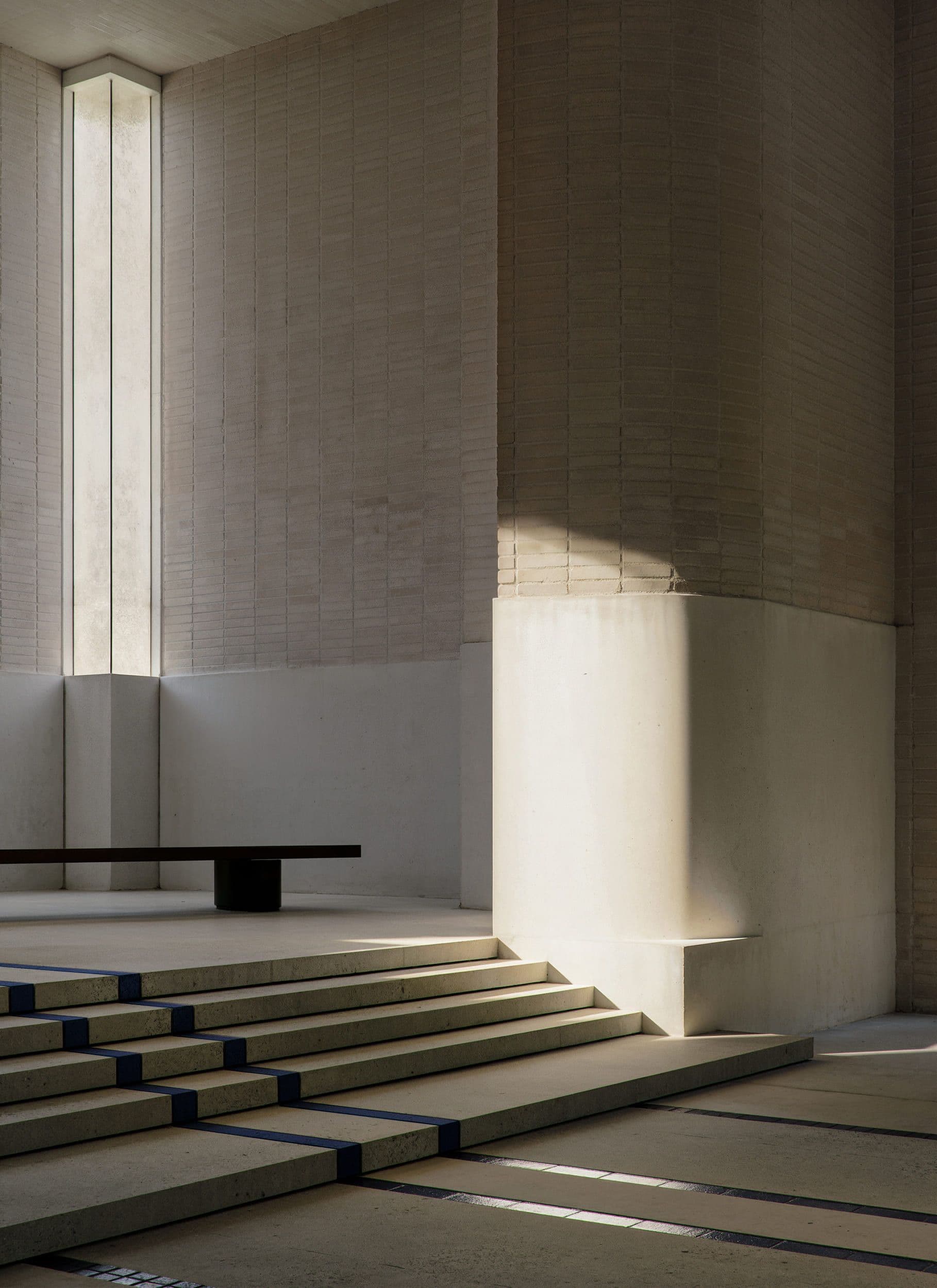
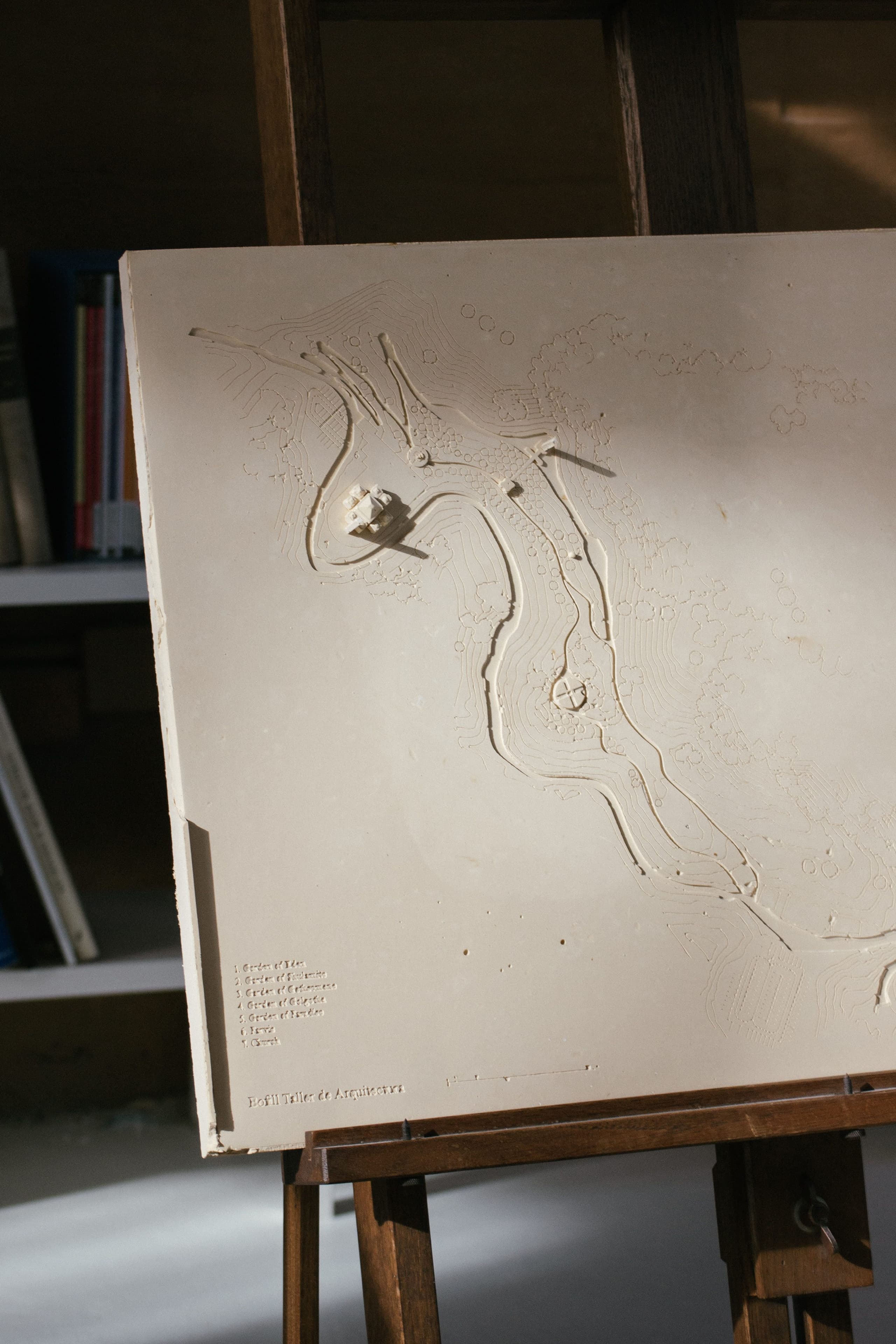
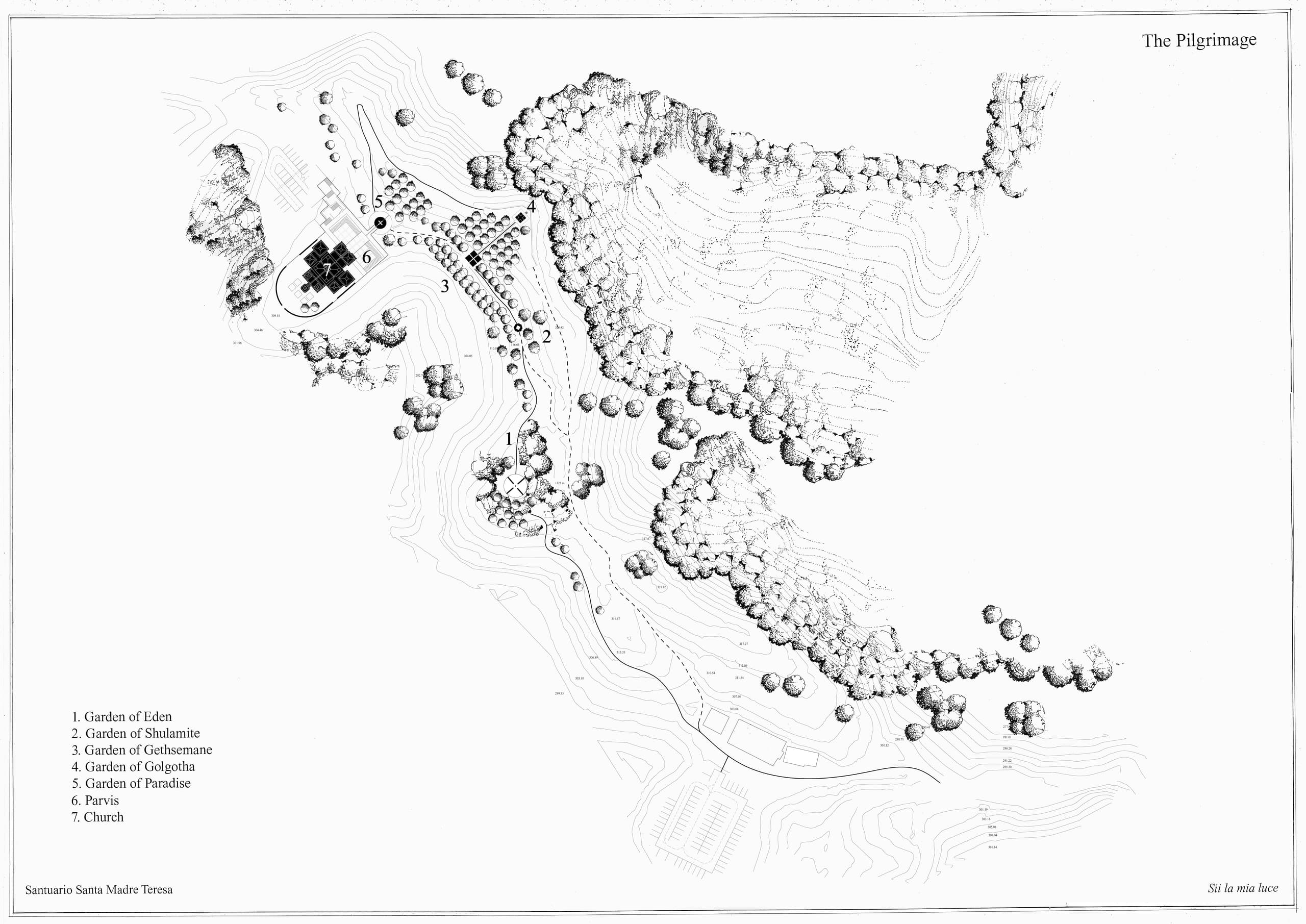
IMAGES BY
MIR